Sports
Closing the college football analytics gap
Numbers have always played an important role in football. Forty-yard times, run by athletes under controlled conditions, have been part of player evaluation for more than 50 years. More recently, the evolution of data in the NFL — from basic box scores to rich play-by-play information to ball and player tracking (Next Gen Stats) — […]
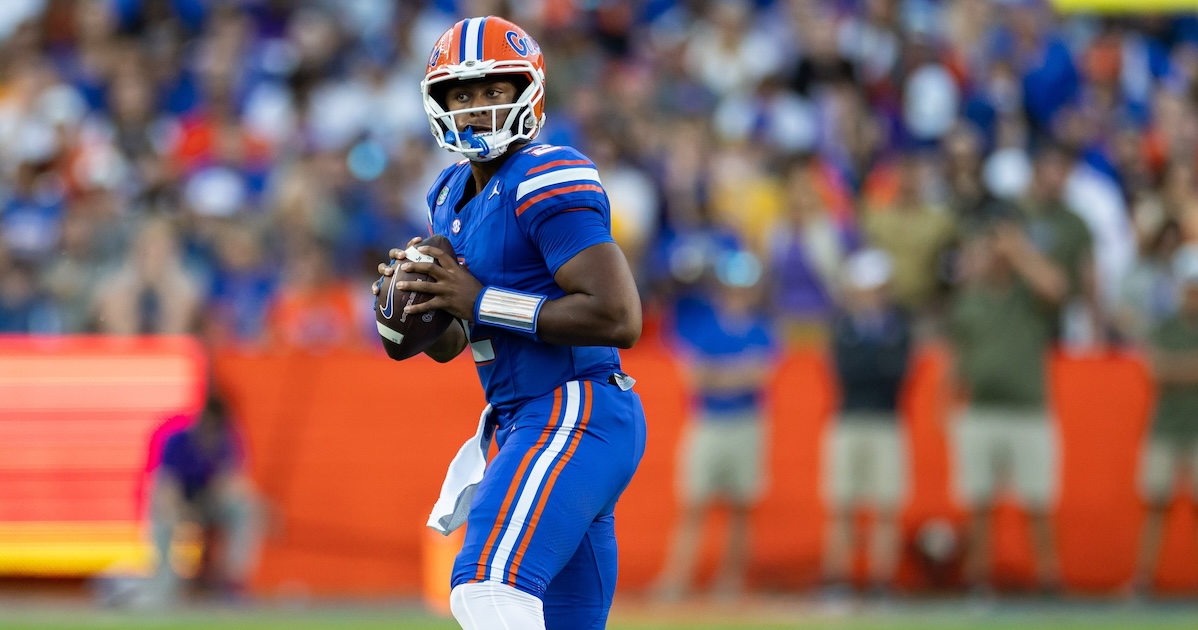
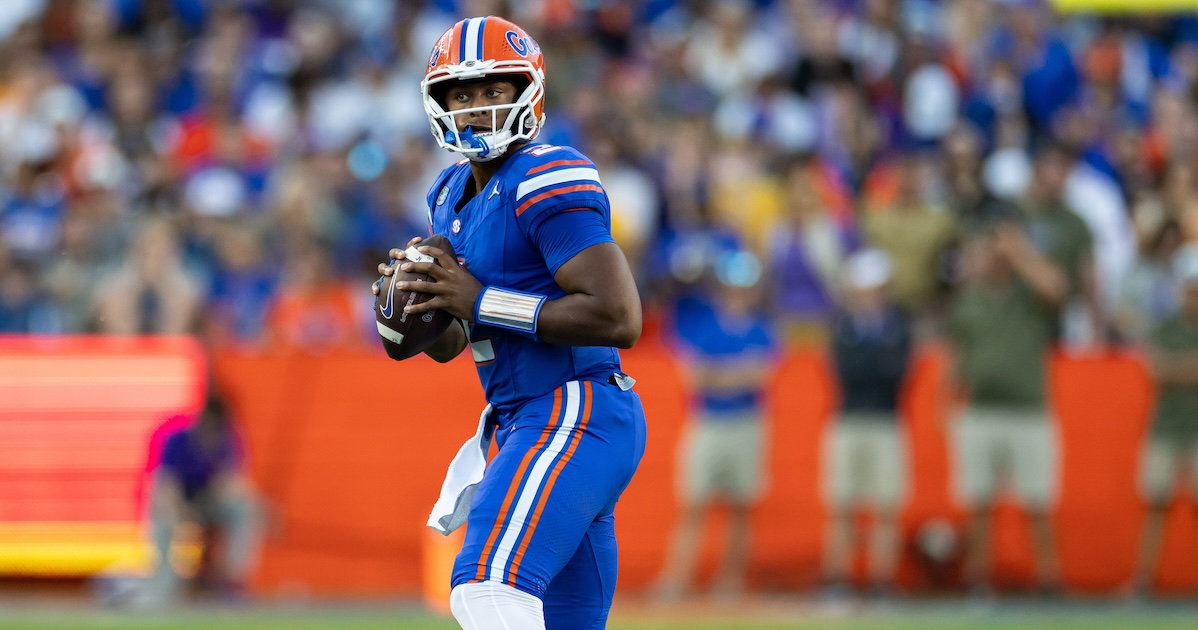

Numbers have always played an important role in football. Forty-yard times, run by athletes under controlled conditions, have been part of player evaluation for more than 50 years. More recently, the evolution of data in the NFL — from basic box scores to rich play-by-play information to ball and player tracking (Next Gen Stats) — has coincided with an increased use of analytics in decision-making, from player evaluation to opponent scouting to in-game strategy. Yet in college football, analytics adoption lags far behind, and this widening gap between the NCAA and NFL is poised to become a critical issue. The NCAA is at least a decade behind the NFL in leveraging data for performance evaluation and strategic decisions.
A decade ago, I was hired as the first analytics professional at the Pittsburgh Steelers. At the time, the NFL was just beginning to integrate data into football operations, following the path set by baseball and basketball. Today, advanced NFL teams employ 10 or more data scientists and engineers who provide valuable insights into every aspect of the game using every data source available. College football still has a long way to go.
The college game has traditionally operated with fewer resources for scouting and player evaluation. Unlike the NFL, where teams have dedicated scouting departments and extensive budgets, college football coaches often juggle multiple roles — acting as both coaches and scouts. With smaller budgets and limited in-person evaluation opportunities, the college system has relied on simpler metrics like high school production and combine numbers.
But the landscape is changing rapidly. With the rise of free agency and the looming introduction of salary caps in college sports, football programs face new and unprecedented challenges. Gone are the days when a few scouts and position coaches could track down the talent they needed. Today, teams need to evaluate hundreds of players in the transfer portal and make decisions within hours, if not minutes. The modern collegiate general manager must navigate an increasingly complex landscape — one that demands modern tools and technologies to stay competitive.
One key to adapting to the shifting landscape in the NCAA lies in the integration of advanced analytics. During my time with the Steelers, I witnessed firsthand how analytics supplemented and complemented traditional player evaluation. The NFL’s embrace of data science has helped teams assess talent with greater precision and efficiency. College football, however, is still in the early stages of adopting analytics. As the landscape of college football evolves, programs that integrate these advanced tools will be better positioned to identify and develop talent more effectively, staying competitive in an increasingly dynamic environment.
At the heart of football analytics is understanding player movement. In the NFL, ball and player tracking systems have revolutionized the way we assess traits like change of direction (COD) — a critical metric for evaluating everything from receivers to cornerbacks and running backs. Until now, college football has lacked the ability to assess this in-game action with the same precision.
Take a player like Rams WR Puka Nacua. Drafted in the fifth round of the 2023 NFL Draft, Nacua didn’t impress scouts with his combine numbers. His average 40-yard dash and unimpressive three-cone drill suggested a late-round pick at best. However, when we analyzed his game footage through the lens of advanced analytics, a different story emerged — a player with elite agility and movement skills that combine tests couldn’t fully capture. Nacua’s in-game speed and COD were key to his breakout rookie season, where he set a record for receptions and yards.
The question is: How many players like Nacua are hidden in the transfer portal or overlooked because they don’t test well, or aren’t in schemes that maximize their potential? Analytical scouting reports give teams the ability to identify hidden gems by focusing on quantifiable athletic traits that truly matter on the field.
Position-specific, machine learning models give further insights by breaking down player skill into individual traits and abilities — quantifying player ability to change direction, burst off the line of scrimmage, collapse the pocket and create space in the running game. With advanced models that measure player actions with remarkable specificity, we provide coaches and GMs the data they need to make better-informed decisions.
But these advancements aren’t just about finding talent — they’re about making the entire process more efficient. These digital scouting reports update automatically after every game. Analytical evaluations are ready before a player ever enters the transfer portal, enabling teams to make decisions quickly and confidently. College football teams face an enormous challenge in player evaluation, particularly with the influx of players in the transfer portal. The ability to analyze thousands of players and pinpoint those who will thrive in a program’s unique system is no longer a luxury — it’s a necessity.
As college football continues to evolve, its analytics capabilities must evolve with it. We’re at a critical inflection point. Programs that embrace this new wave of technology will gain a distinct advantage. By integrating data science into scouting and decision-making, college football can move closer to the NFL’s level of sophistication. The era of relying solely on traditional scouting methods is ending. Those who fail to adapt will be left behind.
The margins in football are small, and they’re getting smaller every year. Just a handful of plays determines whether a team makes the playoff or finishes with a losing record. In the coming years, the difference between success and failure for college programs will depend on how effectively teams use the transfer portal, which in turn will depend on how effectively they use data. This isn’t just about making smarter personnel decisions — it’s about staying competitive in a rapidly changing environment.
As college football evolves, the analytics gap is closing fast. Programs that embrace this change and equip themselves with the right tools will be poised to lead the way. The future of college football analytics is here, and it’s time to take full advantage.
Karim Kassam is VP of Product for Teamworks Intelligence. Karim was the first analytics professional for the Pittsburgh Steelers in the mid-2010s, and has led analytics efforts for the Jacksonville Jaguars and Minnesota Twins.
Sports
Greece ousts U.S. women’s water polo team in world championship semifinals
Greece beat a new-look U.S. women’s water polo team 14-10 in the world championship semifinals, taking out the most dominant nation in the sport’s history. Greece plays 2024 Olympic gold medalist Spain or Hungary in Wednesday’s final in Singapore. The U.S. plays the Spain-Hungary semifinal loser in Wednesday’s bronze-medal game. The U.S. won five of […]
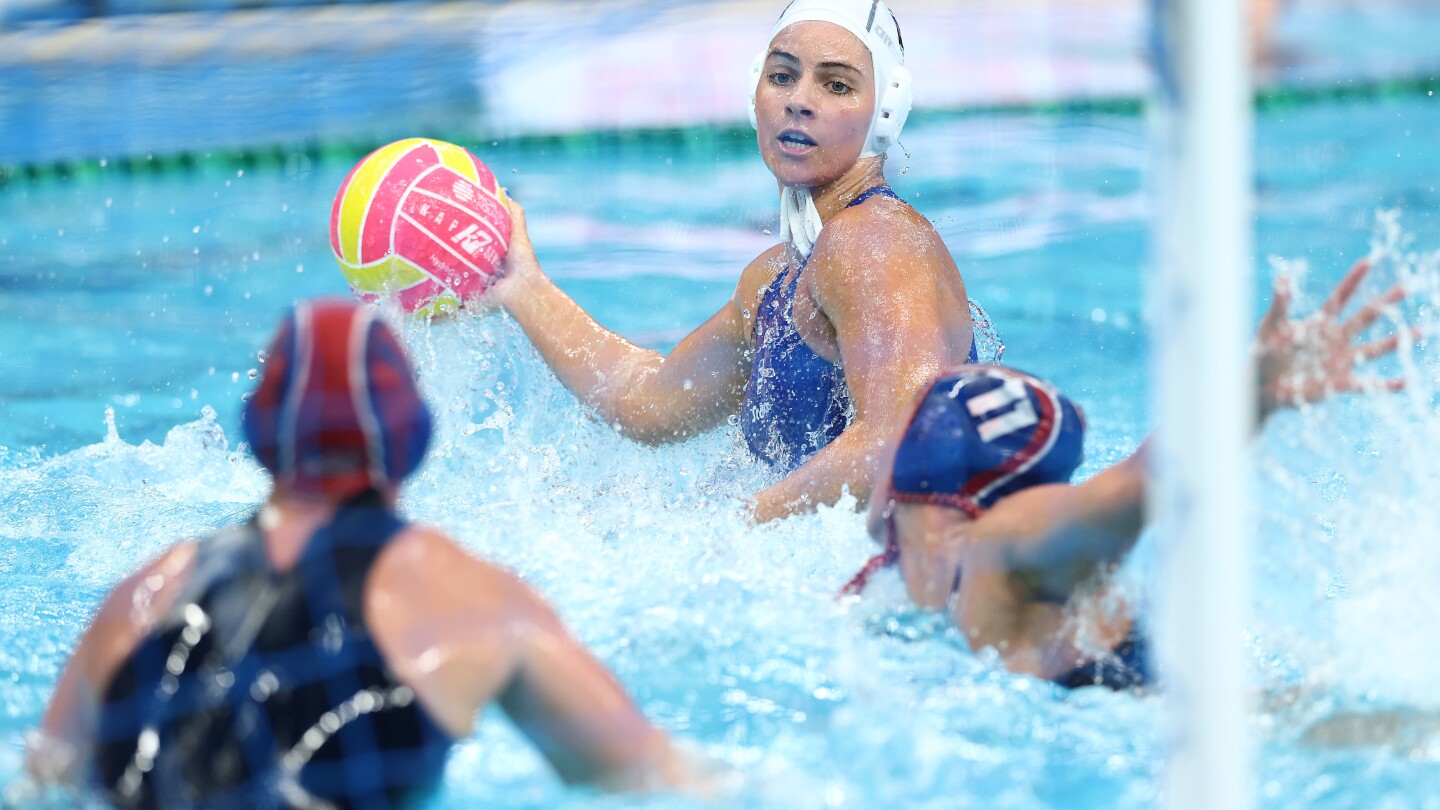
Greece beat a new-look U.S. women’s water polo team 14-10 in the world championship semifinals, taking out the most dominant nation in the sport’s history.
Greece plays 2024 Olympic gold medalist Spain or Hungary in Wednesday’s final in Singapore. The U.S. plays the Spain-Hungary semifinal loser in Wednesday’s bronze-medal game.
The U.S. won five of the previous six world titles, plus Olympic gold medals in London, Rio and Tokyo. Its Olympic streak was snapped in Paris with a semifinal loss (Australia) and then a defeat in the bronze-medal game (Netherlands).
The U.S. roster for the Singapore worlds includes seven Olympians from Paris and seven women making their global championship debut.
Amanda Longan, the lone Olympic gold medalist from Tokyo on the team, has been the primary goalie.
Emily Ausmus, the youngest Paris Olympic team member at age 18, leads the world team with 14 goals through five games.
Olympic stalwarts Maggie Steffens, Maddie Musselman and goalie Ashleigh Johnson are not on the world team.
The U.S. men’s water polo team lost in the quarterfinals at worlds to Serbia in a rematch of their 2024 Olympic semifinal. Serbia won Olympic gold, while the U.S. earned bronze in Paris, its first Olympic medal in 16 years.
The World Aquatics Championships continue through Aug. 3 with swimming and diving events starting Saturday.

World Championships competition in swimming, diving, artistic swimming and water polo air live on Peacock.
Sports
How to Watch League Week 6 – New York City (Day 2): Stream AVP Beach Volleyball Live, TV Channel
Palm Beach Passion look to finish off a 4-0 weekend on Sunday against the Austin Aces while the San Diego Smash and New York Nitro square off League Week 6 of AVP Beach Volleyball wraps up on Sunday at Wollman Rink in Manhattan’s Central Park with the Palm Beach Passion (11-3), Austin Aces (5-5), San […]
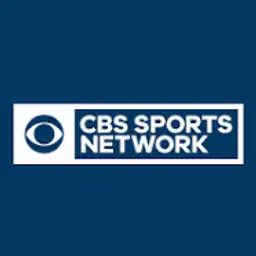
Palm Beach Passion look to finish off a 4-0 weekend on Sunday against the Austin Aces while the San Diego Smash and New York Nitro square off
League Week 6 of AVP Beach Volleyball wraps up on Sunday at Wollman Rink in Manhattan’s Central Park with the Palm Beach Passion (11-3), Austin Aces (5-5), San Diego Smash (5-9) and New York Nitro (4-6) in action. Palm Beach swept two matches from the Smash on Saturday night while the Aces and New York split their contests. On Sunday, the Nitro and Smash women meet in the first match before the national broadcast begins.
How to Watch League Week 6 – New York City in AVP Beach Volleyball Today:
Date: Sunday, July 20, 2025
Time: 1 p.m. ET
TV: CBS Sports Network
Location: Wollman Rink, Central Park
Live stream League Week 6 – New York City in AVP Beach Volleyball on Fubo: Start your free trial today!
Three matches will be featured on the broadcast Sunday, beginning with a men’s battle between Austin and San Diego. The Aces and Passion then meet in a women’s match before the day wraps up with New York and Palm Beach facing off in a men’s match.
Austin’s season has literally been a tale of two directions. The Aces women’s team is a perfect 5-0 while the men are winless at 0-5. The Nitro men are 4-1 with the women at 0-5, while San Diego’s split are 2-5 for the women and 3-4 for the men. Palm Beach has a 6-1 women’s team paired with a men’s side that is 5-2.
On Saturday, the Aces posted a 2-1 win over the Nitro women before New York’s men swept Austin. The Passion swept both of their matches against the Smash to close out the night in Central Park.
What Time Is The AVP Beach Volleyball League Week 6 – New York City?
League Week 6 – New York City takes place on Sunday, July 20, 2025, at 1 p.m. ET. Tune in and catch some great beach volleyball action.
What Channel Is The AVP Beach Volleyball League Week 6 – New York City On?
Looking to watch these matches? Fans can tune into CBS Sports Network to see the action. Make sure you subscribe to Fubo now to watch these matches, as well as numerous other sports leagues.
Watch the AVP Beach Volleyball League Week 6 – New York City on Fubo: Start your free trial now!
Regional restrictions may apply.
Sports
Who should be AGR’s 2024-25 Girls Athlete of Year? Vote now
Video: Penfield’s Peyton Rothfuss scores five in state semifinal win Penfield’s Peyton Rothfuss scored five goals in state semifinal win NFHS Network There was no shortage of excellent athletes in Section V for the 2024-25 academic year. But some stood out above the rest. Over the last several months, the Democrat and Chronicle and Daily Messenger staff, with input […]

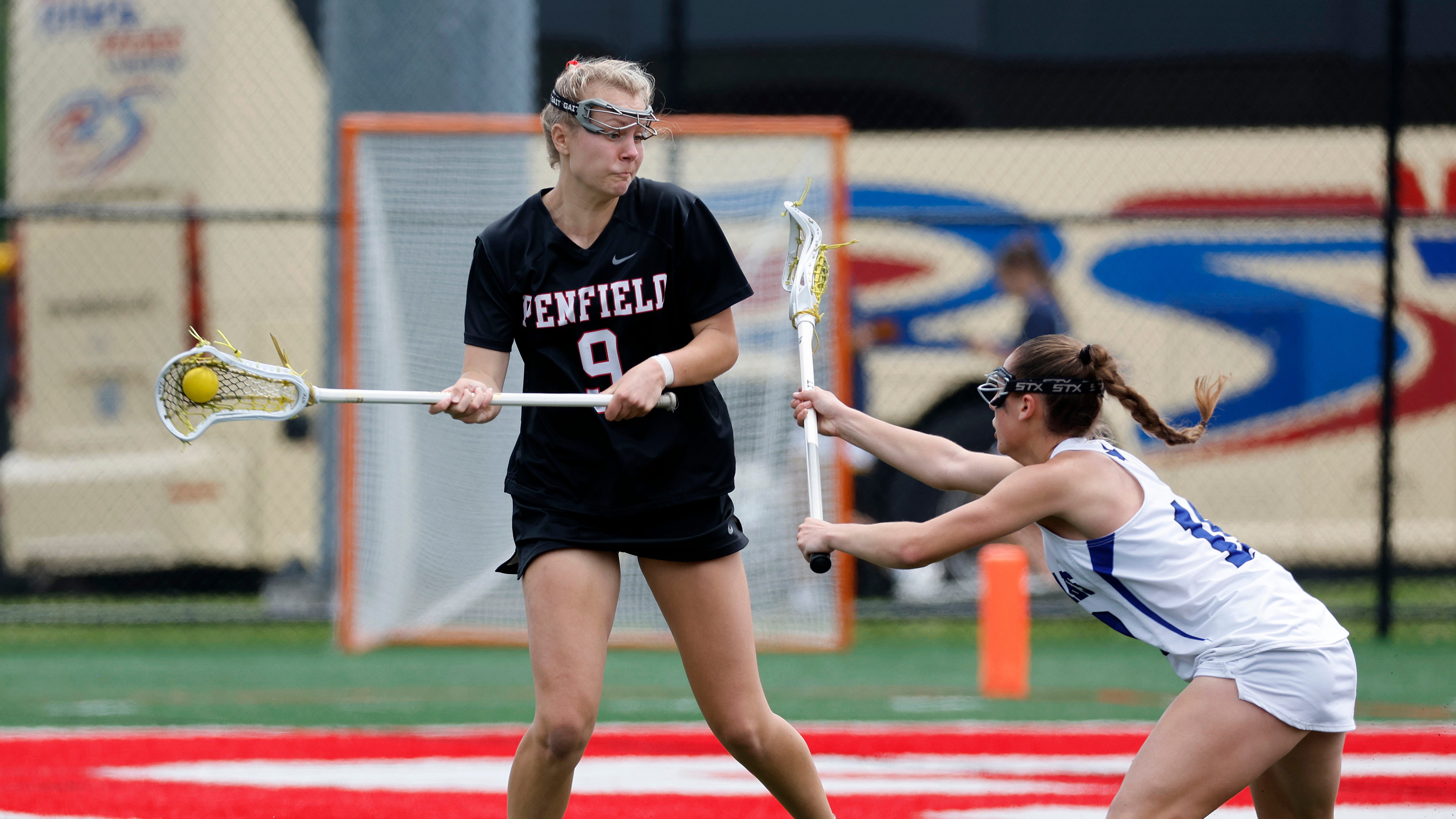
Video: Penfield’s Peyton Rothfuss scores five in state semifinal win
Penfield’s Peyton Rothfuss scored five goals in state semifinal win
NFHS Network
There was no shortage of excellent athletes in Section V for the 2024-25 academic year. But some stood out above the rest.
Over the last several months, the Democrat and Chronicle and Daily Messenger staff, with input from Section V coaches, recognized XX Athletes of the Year in girls sports. Among them, some state champions, sectional champions and future Division I athletes.
Who was the cream of the crop in this collection of elite athletes? Your vote determines which Section V player deserves the honor of the 2024-25 All-Greater Rochester Girls Athlete of the Year presented by Faber Builders. Each honorees’ credentials are listed above the poll — which will be live until 8 p.m. Friday, July 25. The winner will be announced on our Instagram page Monday, July 28.
You can find the poll at the bottom of this page or jump straight to the poll by clicking here.
Vivian Bishop, Alpine Skier of the Year
Why Bishop was Alpine Skier of Year: The North Rose-Wolcott junior was named the overall champion at the Section V championships in February, after sweeping first place in both the slalom and giant slalom races. Bishop then placed third at the state championships in the giant slalom, finishing with a combined time of 2:01.18.
Kiera Cornman, Large School Volleyball Player of the Year
Why Cornman was the Player of the Year: Section V had many great volleyball players last fall, but senior Kiera Cornman was the best. The three-time AGR first teamer ended her Fairport career as a two-time state champion. Cornman’s Raiders compiled a 60-3 record through their run of three straight Section V titles.
Cornman earned NYSPHSAA Class AAA Tournament MVP honors during both state title runs, finishing with a career-high 33 kills in November’s NYS championship match. A future Division I Hawaii beach volleyball player, Cornman powered Fairport to wins over state powers St. Mary’s and Pittsford Sutherland, as well as a straight sets triumph over Section VI’s Lancaster in regionals. She earned Section V Class AAA Tournament MVP after a 3-0 win over Rush-Henrietta in the section final.
Along with AGR Large School Player of the Year, Cornman was also named MaxPreps Player of the Year for New York state and New York Gatorade Player of the Year. Fairport has not lost a regular season or postseason match she has played in since 2022. The Raiders dropped one match while Cornman recovered from an injury this season before she returned to help them finish 20-1.
In 2023, Cornman helped Fairport complete a perfect 21-0 season. Cornman surpassed 1,000 career kills as a junior and recorded 299 kills last fall, including 33 in the state final.
Hannah Devine, Cross Country Runner of the Year
Why Devine was the Cross Country Runner of the Year: Devine was fastest runner among girls in Section V at the state championships. She won the Section V Class A Championship and came in 10th, the best finish among Section V runners, during the McQuaid Invitational Bob Bradley Premier girls race. Her résumé in Section V includes selection to three AGR Girls Cross Country Teams.
Emma Goodell, Outdoor Track and Field Athlete of the Year
Why Goodell was the Athlete of the Year: When the high school outdoor track and field season came to an end, Goodell was either first or second on the Section V leaderboards for the pentathlon, 100-meter hurdles and high jump.
Goodell’s top pentathlon score (100 hurdles, high jump, long jump, 800-meter race and shot put) of 3,334 points at a state qualifier meet ranks No. 5 on Section V’s all-time performance list. The sophomore then went on to place fourth (3,144) at the state championships.
Only one athlete in Section V topped Goodell’s best 100 hurdles time of the season, a race in 14.75 seconds during the Monroe County Championships in May. Goodell is a member of four other AGR teams because of her ability to clear hurdles with speed.
Her best high jump of the season was 5-feet-5.25 inches during a pentathlon competition at the Section V Class A state qualifier.
Paige Harding, Indoor Track and Field Athlete of the Year
Why Harding was the Girls Indoor Track and Field Athlete of the Year: Harding, who was slowed by an injury last school year, rebounded to a runner-up finish at the indoor track state championships.
There were four girls in the state who jumped 12 feet or higher during the indoor season, including Harding, who cleared 12 feet Feb. 6 at Rochester Institute of Technology.
She plans to attend Attend Slippery Rock University (Pa.), double majoring in biology and exercise science, and will also be on the indoor/outdoor track and field team.
Mallory Heise, Basketball Player of the Year
Why Heise was Player of the Year: The reigning All-Greater Rochester Player of the Year, Heise somehow improved in 2024-25. After leading Hilton to the Section V title and a NYSPHSAA finals appearance during the 2023-24 season, Heise pushed the Cadets to 18 straight wins to start this season, helping her team earn the No. 1 overall seed in a deep Class AA division.
In the process, Heise set numerous program records at Hilton, including career (2,140 points) season (702) single-game (43) scoring, 3s in a game (nine), 3s in a season (101), and 3s in a career (226). Heise’s career total is 14th all-time in Section V history and fifth among girls players from Monroe County.
An all-around player, Heise also averaged 10 rebounds, four assists and three steals per game.
“Mallory’s success is a testament to her approach,” Hilton coach Dave Heise said. “I have never played with or coached anyone with her work ethic. There’s an intent and purpose to every rep, every drill, every game. She’s helped her teammates and our program build that mindset. Her legacy will always be that hard work and humility matter.”
Of the 48 Section V coaches who submitted All-Greater Rochester ballots, 28 selected the Hilton senior as their top player. No other player received more than three nominations.
The Hilton senior plans to attend St. Bonaventure University and play Division I basketball.
Meredith Hogan, Swimmer of the Year
Why Hogan was Swimmer of the Year: Hogan has been one of the area’s fastest swimmers her entire career, and proved to be Section V’s best as a senior. The Victor star will graduate with 10 Section V Class A championships, repeating as the queen of the 200-yard freestyle and 100-yard butterfly when she earned her second Section V Class A Swimmer of the Meet honor last fall.
Hogan concluded her career with a pair of podium appearances in those same events at the NYSPHSAA championships. Prior to Hogan’s individual section titles, she swam legs on multiple Section V championship relays: the 200-yard freestyle relay (thrice), 200-yard medley relay (twice) and the 400-yard freestyle relay. She will continue to swim at Division I Binghamton.
Destiny Jodoin, Golfer of the Year
Why Jodoin was Golfer of the Year: Jodoin won the most important tournament played during the fall, the Section V Championship. The three-time AGR team member won by eight strokes at Country Club of Rochester, including a four strokes over par 76 on the second and final day. The Victor junior tied for second at Monroe County Tournament of Champions, one stroke off the lead at Monroe Golf Club. She finished the season with the best nine-hole average over par in Section V, 2.4.
Jenna Lawrence, Nordic Skier of the Year
Why Lawrence was the Skier of the Year: The Honeoye Falls-Lima junior finished second this winter at the New York state championships.
Lindsay Lenhard, Soccer Player of the Year
Why Lenhard was Player of the Year: No Section V girls soccer program has been consistently dominant to the degree of Spencerport, and Lenhard is a primary reason why.
The midfielder helped the Rangers capture sectional bragging rights in all five of her varsity seasons (including this fall), that also spanned a 59-match unbeaten streak — one of the longest such streaks in New York state history. Her career numbers of 85 goals, 70 assists and 240 total points land her atop Spencerport’s all-time leading scoring list.
New York state’s Class AA player of the year in 2023 as a junior, Lenhard upped her game in last fall as a senior. Despite playing two fewer games, her 29 goals and 86 total points — the latter ranked No. 2 in all of Section V, while playing in a tough Monroe County league — were both improvements from 2023.
With scoring ability came a competitive tenacity and hunger for ball possession that made Lenhard, arguably, Section V’s most difficult mark. In addition to her selection as AGR Player of the Year, Lenhard was named first team all-state in Class AA and was Section V’s lone All-American selection by the United Soccer Coaches association.
Addie Morgan, Flag Football Player of the Year
Why Morgan was the Player of the Year: Coaches in Section V gave their votes to Morgan for her consistent production in key moments on both offense and defense. Webster Schroeder, a first-time Section V champion, advanced to the Class B state championship game where the Warriors defeated Tappan Zee 20-14.
Morgan intercepted three passes in the state tournament final, one for a touchdown and another during Tappan Zee’s final drive. Morgan picked off 16 passes this season, 11 during the playoffs.
“It comes down to, you have to practice how you play,” Morgan said after the Section V tournament final. “We practice like a champion, apparently.”
Faith Pasquantonio, Small School Volleyball Player of the Year
Why Pasquantonio was Player of the Year: Junior Faith Pasquantonio’s dominance guided Finney to the program’s first Section V championship since 2017, when her sister, Sarina, played. Their mother, Megan, coaches the Falcons.
Faith Pasquantonio helped Finney avenge losses to Perry and NYS No. 1-ranked York en route to the Section V Class D1 title, and another straight sets win over Elba in the crossover match. Her regional performance, though, may have been the best match of her career. She terminated 28 kills and 10 aces and nearly clinched a trip to states for Finney.
Pasquantonio’s prowess often led to her being the best player on the court, guiding the Falcons (20-5) to regular season wins over eventual Section V Class B champ Aquinas and previously unbeaten Lyons.
Melody Queri, Field Hockey Player of the Year
Why Queri was the Player of the Year: “Beyond her skills and her goals, which were some of the best in (Monroe) county this year, Mel has infectious energy. She leads by example. The whole team is brought to another level by her infectious energy,” Pittsford Sutherland coach Kathy Hutteman said.
Described as an unselfish player, Queri moved from attack to midfield in at least five or six games to help the Sutherland Knights defensively. “It was also a way to throw off our opponents strategically,” Hutteman said.
She scored 27 goals during the season.
Peyton Rothfuss, Lacrosse Player of the Year
Why Rothfuss was Player of the Year: Rothfuss did it all this year for Penfield, helping the Patriots win their first New York state title and sixth Section V title.
The junior was a major piece of the Patriots’ offensive output. An attack, Rothfuss does her best work from behind the cage where she expertly finds a cutting teammate for a goal, or can create scoring opportunities for herself. Her 64 goals and 102 points were the highest totals for the program in at least a decade.
One of Section V’s best in the circle, Rothfuss totaled 166 draw controls this spring, which ranked second in the section.
She was at her best in the biggest games. In the Class A section final against Rush-Henrietta, Rothfuss racked up 12 draw controls to help Penfield dominate possession, and added two goals. In the state semifinals against defending champion Cicero-North Syracuse, was the Penfield’s leader with five goals.
Teegan Sibble, Wrestler of the Year
Why Sibble was the Wrestler of the Year: One of two girls who wrestled in Section V and won a state title at the first girls wrestling state championships, Sibble received almost all of the votes among area coaches for this season’s top wrestler.
Sibble finished with a 12-0 record in girls wrestling. The senior was also a lightweight on the Bolivar-Richburg varsity boys wrestling team and finished as a first team Steuben County league all-star with a 34-6 record. Last season, Sibble won a Section V boys class title and placed third in the 101-pound weight class at the Section V Division II (small schools) boys wrestling state championships qualifier.
Anella Tillman, Bowler of the Year
Why Tillman was Bowler of the Year: Penn Yan’s Anella Tillman separated herself from every other Section V bowler with her consistent play throughout the regular season. The Division I bound bowler averaged an impressive 205.56 pins through 39 games. Tillman was the only girl who carried a pins average above 200, and her 8,017 total pins were 254 more than Section V’s next best regular season score.
A University of Alabama at Birmingham commit, Tillman ended her varsity career on Section V’s Division II composite team at the state tournament. The Penn Yan star rolled a 223-1,080 at states. Tillman also guided the Mustangs to a third-place finish at the Section V Class C championships.
Leyla Tozin, Tennis Player of the Year
Why Tozin was Player of the Year: Unquestionably Section V’s best tennis player this decade, senior Leyla Tozin was an easy choice to win this award for the third time. The Brighton star hasn’t dropped a set, nevertheless a match, to a Section V opponent since 2021. Tozin will graduate with over 100 wins to just nine losses.
Tozin has been Section V’s top performer at the NYSPHSAA tournament. She placed third the last two years and finished fourth in 2022 as a singles player. Tozin has won an astounding 12 Section V championships. The list includes six team bricks, five singles titles and a doubles championship in 2019.
Tozin also guided Brighton (14-2) to their second NYS team tournament this fall after capturing the program’s ninth consecutive Section V team championship. Leyla’s mother, Anna, was also a Brighton tennis star with two Section V singles titles and a third-place finish at states.
Kaili Witherell, Softball Player of the Year
Why Witherell was Player of the Year: Kaili Witherell is the latest pitcher to be honored as the All-Greater Rochester Player of the Year after leading her team to the state championship game. A right-handed senior, Witherell, who also became the third Section V softball player to be named New York Gatorade Player of the Year, guided the Haverling Rams to the program’s first state final. Witherell also won the Section V Class B1 championship, Haverling’s first title since 2016, and pitched a long-awaited win over reigning state champ Wellsville.
A Division I Texas State University commit, Witherell was the clear choice for AGR POY after Section V coaches voted. Witherell ended her career with a 72-13 record in over 556 innings pitched, and a school record 1,108 strikeouts (there are at least eight other Section V pitchers with 1,100 Ks). She ended her career with a .142 OBP after ending the 2025 season with a .144 OBP and 252 strikeouts.
Witherell was just as lethal at the plate. As Haverling’s leadoff hitter, she was 4-for-4 in the state semifinal while helping her cause with a shutout in the circle. Witherell recorded a .532 BA with six doubles, three triples and a home run this spring. Over her five-year career, Witherell registered a .502 BA with 36 doubles, 16 triples and seven homers.
Sports
Rugby legend Alun Wyn Jones appointed Honorary Colonel of 3rd Battalion, The Royal Welsh
King Charles has approved the appointment of former Welsh rugby star Alun Wyn Jones as Honorary Colonel of 3rd Battalion the Royal Welsh. Alun Wyn is the most capped rugby player in history having played for Wales 158 times and 12 times for the British and Irish Lions including captaining the side on their previous tour […]

King Charles has approved the appointment of former Welsh rugby star Alun Wyn Jones as Honorary Colonel of 3rd Battalion the Royal Welsh.
Alun Wyn is the most capped rugby player in history having played for Wales 158 times and 12 times for the British and Irish Lions including captaining the side on their previous tour to South Africa in 2021.
Colonel of the Regiment, Major General Chris Barry, said: “It is an honour for us to bring into the fold a true Welsh warrior who has served and led the national rugby team of Wales and the British and Irish Lions and the most capped rugby player in history.”
He replaces Brigadier Russ Wardle, the former head of the Army in Wales, in the role and will serve as an ambassador for Wales.
Maj Gen Barry said: “The Regimental Headquarters, on behalf of all ranks of The Royal Welsh, would like to thank the outgoing Honorary Colonel of 3 Royal Welsh, Brigadier Russ Wardle OBE DL, for more than 11 years of outstanding leadership and service to the regimental family. We wish him all the very best for the future.”
Alun Wyn will wear military uniform in the role and is humbled to be appointed, saying: “Having played in our great stadium and seeing the men and women in uniform holding our national flag, it was always a significant and poignant symbol of the history and connection to the military in Wales.
“There was also the iconic Royal Welsh Band serving to provide acoustics in the stadium, which is something that I enjoyed as much as a player as I continue to do now as a fan.
“My apprehension was borne out of the responsibility felt while wearing the red jersey and all that comes with representing our nation. Learning more about the history of The Royal Welsh, particularly Sir Tasker Watkins, who served in the Welsh Regiment and his heroism and commitment to Wales and Welsh rugby, made it something I couldn’t turn down.
“I’m looking forward to learning more about 3 Royal Welsh and also share my experience of leadership in sport and the experience of leaving one career and moving into another.
“The fact that personnel serving with 3rd Battalion also have day jobs also sparked an awareness that reservists are all around us in civilian life.
“Yes, the uniform I’ll wear in this role will be very different to what I’m used to, but one I will be equally proud to wear as any jersey in my playing career and represent 3 Royal Welsh and Wales.”
Sports
City To Review Future of Country Music Festival
New Greenway Planned Along Foley’s Wolf Creek By OBA Staff • July 18, 2025 Foley, Ala. — (OBA) — The City of Foley is moving ahead with plans to expand its pedestrian trail system by adding a new walking path along Wolf Creek. The project, known as the Schreiber Trail, would stretch between the Wilbourne […]

New Greenway Planned Along Foley’s Wolf Creek
By OBA Staff
•
July 18, 2025
Foley, Ala. — (OBA) — The City of Foley is moving ahead with plans to expand its pedestrian trail system by adding a new walking path along Wolf Creek. The project, known as the Schreiber Trail, would stretch between the Wilbourne Antique Rose Trail and North Poplar Street. It will follow the south bank of the creek…
Sports
Review: Giveon’s ‘BELOVED’ unpacks modern romance
If you were planning on protecting your peace, Giveon has other plans. American singer-songwriter Giveon Dezmann Evans dropped his second studio album “BELOVED” on July 11. The 14 tracks give listeners 38 minutes of an emotional rollercoaster by holding a magnifying glass to every phase of getting over a breakup. ‘BELOVED’ also pays homage to […]

If you were planning on protecting your peace, Giveon has other plans.
American singer-songwriter Giveon Dezmann Evans dropped his second studio album “BELOVED” on July 11. The 14 tracks give listeners 38 minutes of an emotional rollercoaster by holding a magnifying glass to every phase of getting over a breakup.
‘BELOVED’ also pays homage to ‘70s rhythm and blues, which relied heavily on strong instrumentals and soulful vocals. This is for those who’ve lingered on a dead love for too long before moving on.
The intro reflects the recovery stage of a fresh breakup. “MUD” kicks things off with a magical instrumental that continues throughout the entire album. While the music shines in this intro song, the lyrics cannot go unnoticed. “When you tell your story, it means telling everything about me” speaks the same as Fleetwood Mac’s “you’ll never get away from the sound of a woman that loves you.”
This also touches on one of the main themes in the album: the struggle of finding who you are outside of a relationship. It’s not uncommon to feel like the person you are after a breakup is too reflective of your ex. “RATHER BE” dives into the reality of settling out of convenience despite having someone else on your mind. It’s a waste of time, especially when Giveon knows he’d “rather be with you than the other half of someone who’s not even half of you.”
“TWENTIES” is Giveon realizing he spent too much of his youth with someone who was never going to be the right one. He thought he was growing alongside them, when in reality everything he learned to love was just because his partner loved it.
Like he said, though, he “hung onto you ‘cause I didn’t know better, I just felt like time was running out … I was so young and dumb.” For all the 20-somethings, do you also feel the weight of the world? Why is the success of our personal lives judged side by side with the success of our love lives? Sometimes young love strikes in frantic moments, and that’s why we settle for less.
“STRANGERS” shows the grief and anger before realizing it’s time to move on. I’m sure you’ve also found yourself thinking, “how’d we go from I love you, to how you been?” about someone you thought would be in your life forever.
“NUMB” has that same beautiful instrumental and complementary background vocals. It’s about hitting that rock bottom feeling after a breakup, when you think there’s no coming back from the pain. You “don’t even feel, don’t even fight, don’t know the days and I don’t know the nights.” This in combination with the fact that he’s “running out of things I want ever since she took my love” is like twisting the knife. “NUMB” ties up the theme of not knowing who you are outside of a relationship.
“I CAN TELL” flips emotions. It’s a profession of love for someone in a relationship. He knows he can treat them better in every way and “if you let me, I’ma take his place.” This part of the album starts to show toxic themes. “I CAN TELL” is messy and destructive, while “DIAMONDS FOR YOUR PAIN” is emotional and manipulative.
“DIAMONDS FOR YOUR PAIN” is about a connection that just won’t fizz out – because he won’t let it. Giveon uses what this person loves against them to reel them back in. Every time, he’s just going to trade “diamonds for your pain, that’s a beautiful exchange.”
“KEEPER” shows his growth. He’s not the best, but he wants to work for another chance with this person. He’s “tryna be the one that you keep, not just the one who comes back around and drives you crazy.”
“SIX:THIRTY” is just 32 seconds, and I’m a fan of interlude types of songs in albums. It’s a nice buffer between tracks while serving as a palate cleanser in between Giveon’s second chance love story in “KEEPER” and his epiphany in “BACKUP PLAN.”
Now, dare I say “BACKUP PLAN” is the other side of “I CAN TELL” in a way? This is what it’s like to realize your significant other is checked out of the relationship. Giveon said they “used to fight a little longer, now you choose silence over war,” which shows clear as day that things aren’t going to end well.
“BLEEDING” is another ballad about putting someone before you. In a desperate effort to make a connection work, Giveon’s putting the pieces back together of this girl who’s still hung up on her ex, hurting himself in the process. He’s literally bleeding for her love, and it’s not going so well.
Things change in “DON’T LEAVE.” Rather than putting all his energy into someone reluctant to replenish with him, Giveon fights for a strong connection that doesn’t want things to end either.
The theme of being better for someone better continues in “AVALANCHE,” one of my favorites by far. Giveon’s feeling butterflies while realizing this is the only girl he needs; he’s “falling hard, and falling for you” after “long calls, playing songs we both love.” It really is just the simple moments. Music is a love language in itself, of course.
Speaking of love languages, the last track hits on there being more to a relationship than physical attraction. Like Giveon said, there’s the “GOOD BAD UGLY.” He worries about his relationship, wondering if the commitment is still mutual. Even though he’s wondering if it’s time to leave, he remembers being loved through the good, bad and ugly, and how it’s important to reciprocate that.
For his second studio album, Giveon can give himself a pat on the back. He’s placing his name at the top of R&B’s resurgence while fine tuning his own craft along the way. “MUD,” “STRANGERS” and “AVALANCHE” will live on my playlists for a long time, but I can’t not mention leading singles “RATHER BE” and “TWENTIES.” Every track in “BELOVED” has a different take on common storylines in modern romance, from the young and naive to the mature and yearning.
-

 College Sports2 weeks ago
College Sports2 weeks agoWhy a rising mid-major power with an NCAA Tournament team opted out of revenue-sharing — and advertised it
-
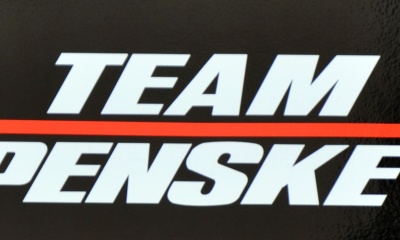
 Motorsports2 weeks ago
Motorsports2 weeks agoTeam Penske names new leadership
-

 Youtube3 weeks ago
Youtube3 weeks ago🚨 BREAKING: NBA MVP Shai Gilgeous-Alexander signs the RICHEST annual salary in league history
-

 Sports2 weeks ago
Sports2 weeks agoNew 'Bosch' spin
-
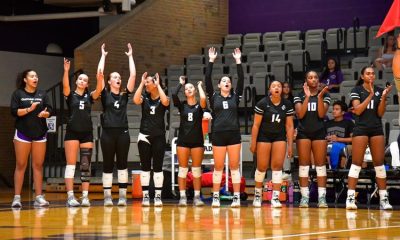
 Sports5 days ago
Sports5 days agoVolleyball Releases 2025 Schedule – Niagara University Athletics
-

 Fashion7 days ago
Fashion7 days agoEA Sports College Football 26 review – They got us in the first half, not gonna lie
-

 Sports2 weeks ago
Sports2 weeks agoE.l.f Cosmetics Builds Sports Marketing Game Plan Toward Bigger Goals
-

 College Sports2 weeks ago
College Sports2 weeks agoMSU Hockey News – The Only Colors
-

 College Sports1 week ago
College Sports1 week agoBuford DB Tyriq Green Commits to Georgia
-

 Health1 week ago
Health1 week agoCAREGD Trademark Hits the Streets for Mental Health Month
























































